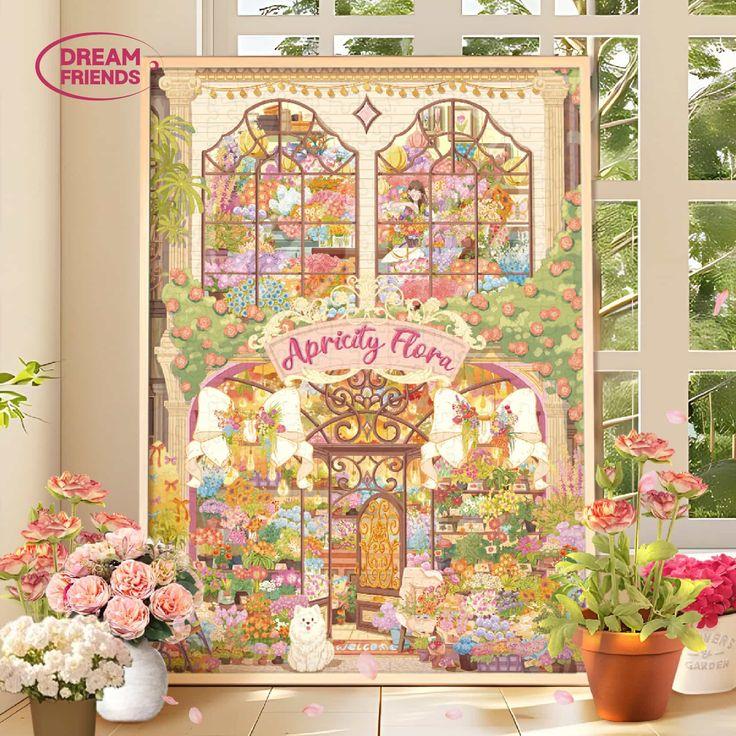The Timeless Appeal of Jigsaw Puzzles – More Than Just a Pastime

In an age dominated by digital entertainment and fast-paced technology, the humble jigsaw puzzle remains a cherished and enduring activity for people of all ages. Whether it's a rainy afternoon, a family gathering, or a quiet moment of solitude, the act of piecing together a jigsaw puzzle offers a unique blend of relaxation, challenge, and satisfaction. But beyond being just a form of recreation, jigsaw puzzles have proven cognitive benefits, foster social interaction, and even contribute to emotional well-being. This article delves into the rich history, psychological impact, and modern relevance of jigsaw puzzles.
A Brief History of Jigsaw Puzzles
The origin of the jigsaw puzzle dates back to the 18th century. The first known jigsaw puzzle was created around 1760 by British cartographer John Spilsbury. He mounted a world map on a sheet of wood and cut it into pieces to help children learn geography. These early puzzles were literally cut using a jigsaw (hence the name), and they were primarily educational tools.
As printing and manufacturing techniques advanced, puzzles became more widespread and began to feature not just maps but also artwork, landscapes, and eventually photographs. By the 20th century, puzzles had evolved into a popular form of entertainment for both children and adults. During the Great Depression, puzzles saw a surge in popularity as an affordable leisure activity. The post-World War II era introduced die-cut cardboard puzzles, making them even more accessible and affordable.
Today, jigsaw puzzles come in all shapes and sizes—from traditional cardboard versions to intricate wooden ones, and even digital puzzles available on tablets and smartphones. Despite technological advancements, the classic physical puzzle retains a special place in the hearts of millions.
Cognitive Benefits of Jigsaw Puzzles
One of the most celebrated aspects of jigsaw puzzles is their positive impact on cognitive function. Solving a jigsaw puzzle engages multiple areas of the brain simultaneously, making it an excellent mental workout.
1. Enhanced Problem-Solving Skills:
Jigsaw puzzles require solvers to assess shapes, colors, and patterns, and to develop strategies for fitting pieces together. This process enhances critical thinking and problem-solving abilities.
2. Improved Visual-Spatial Reasoning:
As you work to determine how pieces fit together based on their shape and the image they form, your brain strengthens its visual-spatial processing skills. This is beneficial not only for puzzle-solving but also for activities such as driving, packing, and navigating.
3. Boosted Memory:
Remembering the shapes and colors of various pieces and where they might fit improves both short-term and working memory. Regular engagement with puzzles can contribute to better memory retention over time.
4. Increased Attention to Detail:
Puzzles demand focus and the ability to notice subtle differences in color gradients or piece shapes. This helps in sharpening attention to detail, a skill transferable to many real-world tasks.
5. Delayed Cognitive Decline:
Several studies suggest that mentally stimulating activities like solving puzzles can help delay the onset of dementia and Alzheimer’s disease, particularly in older adults.
Emotional and Psychological Benefits
Beyond cognitive advantages, jigsaw puzzles offer significant emotional and psychological benefits:
1. Stress Relief:
The repetitive and focused nature of puzzle-solving can have a meditative effect, reducing stress and promoting mindfulness. As you concentrate on finding the right pieces, your mind lets go of daily anxieties and enters a state of flow.
2. Sense of Accomplishment:
Completing a puzzle, especially a challenging one, provides a tangible sense of achievement. This boosts self-esteem and fosters a positive mindset.
3. Patience and Perseverance:
Jigsaw puzzles teach patience and the value of persistence. They remind us that progress may be slow, but with steady effort, the goal is achievable.
Social and Family Connections
Jigsaw puzzles also serve as excellent tools for social bonding. Families often gather around a table to work on a puzzle together, fostering communication, cooperation, and shared joy. In classrooms, community centers, or nursing homes, puzzles encourage teamwork and intergenerational interaction.
For those who prefer a solitary experience, puzzles still provide a sense of connection—whether to the artist whose work is depicted or to a personal journey of self-reflection.
The Modern Puzzle Renaissance
In recent years, there has been a notable resurgence in the popularity of jigsaw puzzles. This “puzzle renaissance” can be attributed to several factors:
-
COVID-19 Pandemic: With lockdowns and social distancing measures in place, many turned to puzzles as a form of entertainment and a way to cope with isolation.
-
Rise of Adult Puzzles: Once seen primarily as children’s toys, puzzles are now marketed to adults, featuring complex designs, limited-edition artwork, and even 3D puzzles.
-
Custom and Personalized Puzzles: Companies now offer custom puzzles where customers can upload their own photos to create personalized puzzle experiences.
-
Digital Adaptations: While physical puzzles remain beloved, digital jigsaw platforms have gained traction, offering convenience and a wide variety of images.
Conclusion
The jigsaw puzzle is far more than a simple game or pastime. It is a multifaceted activity that entertains, educates, and enriches. Its enduring appeal lies in its ability to adapt to different needs—whether for cognitive development, emotional grounding, social bonding, or sheer enjoyment. In a world that often feels chaotic and fast-moving, the jigsaw puzzle offers a welcome opportunity to slow down, connect, and discover the joy of putting the pieces together, one at a time.
- Art
- Causes
- Crafts
- Dance
- Drinks
- Film
- Fitness
- Food
- Jeux
- Gardening
- Health
- Domicile
- Literature
- Music
- Networking
- Autre
- Party
- Religion
- Shopping
- Sports
- Theater
- Wellness



